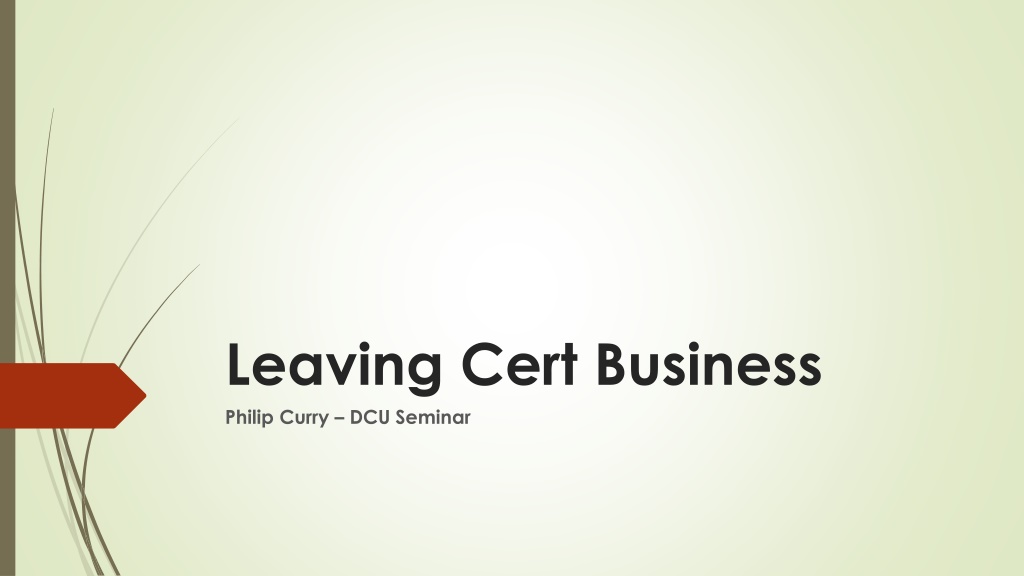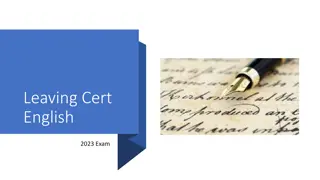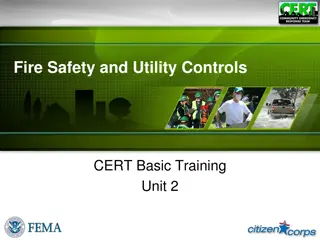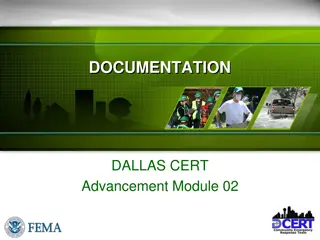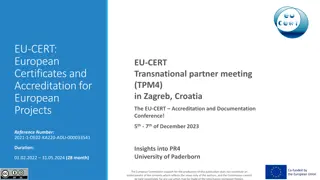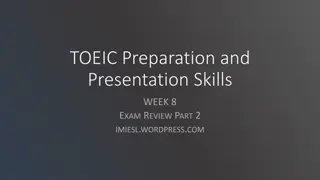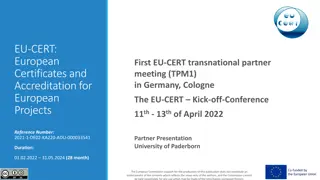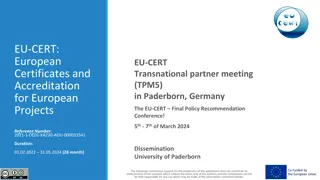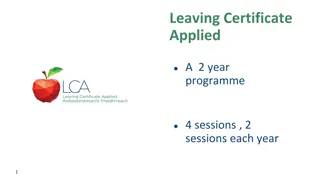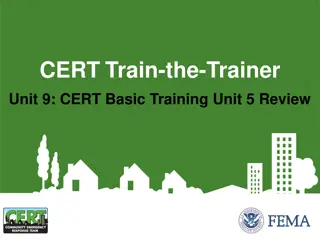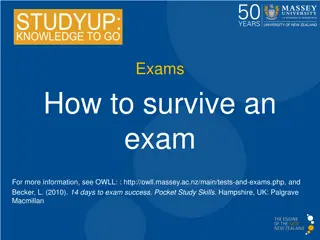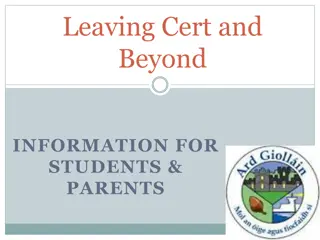Effective Strategies for Leaving Cert Business Exam Success
Gain insights into exam preparation and question types for Leaving Cert Business, including a detailed exam plan, tips for answering different question types, common topics, and specific ABQ topics for various units. Learn how to approach short answer questions and optimize your paper layout for clarity and efficiency.
Uploaded on Nov 14, 2024 | 0 Views
Download Presentation

Please find below an Image/Link to download the presentation.
The content on the website is provided AS IS for your information and personal use only. It may not be sold, licensed, or shared on other websites without obtaining consent from the author. Download presentation by click this link. If you encounter any issues during the download, it is possible that the publisher has removed the file from their server.
E N D
Presentation Transcript
Leaving Cert Business Philip Curry DCU Seminar
Exam Plan Time Exam Plan 9:30 Read the paper and Do all SAQs 10:00 ABQ 10:40 First Long Question 11:05 Second Long Question 11:30 Third Long Question 11:55 Fourth Long Question 12:20 Final Sweep of Paper
Question Types Evaluate In my opinion or judgement Discuss Explain and Explain
Reading an Exam Question Evaluate how the SOGSOS Act helps to protect the consumer Evaluate.......... SOGSOS ACT ........... Protects the Consumer......
Paper Layout and your Answer Book Label all questions clearly One part per page or pages Leave gaps between mini paragraphs Straight to the point No long winded intro Name and explain Practise writing neatly against the clock
Topics that appear frequently Management Skills Management Activities Marketing mix Stages in NPD Promotional mix Ratios
ABQ Topics Unit 4 Types of Taxes and Insurance policies Sources of Finance Functions of HRM Strategies for change TQM
ABQ Topics Unit 5 Market research and new ideas Marketing Mix NPD stages Promotional mix Business plan Types of Expansion
ABQ Topics Unit 6 Social and Economic benefits of Community Development Social Responsibility towards Stakeholders Impact of Business on Economy Impact of Economy on Business Types of Business Organisations
Short answer questions Q1 Question National Consumer Agency NCA Foreign Direct Investment FDI Extraordinary General Meeting EGM Research and development R&D IBEC Irish Business and Employer s Confederation
Q2 Distinguish between a Condition and a Warranty? A condition is a fundamental part of a contract and if broken the contract is cancelled A warranty is a less important part of a contract and if broken contract is not cancelled but one party can sue for damages
Q3 Define each of the following terms Product screening Eliminating poor or unsuitable ideas Feasibility Study An investigative report into viability of a product Prototype development A mock up or original of the untested product
Q4 Distinguish between a Fidelity Guarantee and Employer Liability ? Fidelity Guarantee covers against dishonest employees who may steal cash stock or ideas Employer liability covers against claims due to employee accidents due to employer negligence
Q5 Outline the 2 appropriate liquidity ratios for a business? Briefly comment on the ideal ratios? The Acid Test ratio excludes closing stock from Current assets and then divides the answer by current liabilities Current ratio is current assets; current liabilities The Current ratio should be 2:1 The Acid Test ratio should be 1:1
Q6 Define Ethical Business Outline two examples of ethical business This refers to business with a moral attitude to stakeholders Right versus wrong is more important than profit Examples Fair Trade coffee Patagonia donates 1% of sales to help save the planet
Q7 Distinguish between Packaging and Branding as part of the product component of the Marketing Mix? Packaging refers to the protective material that attracts customers, distinguishes the product and keeps the product fresh or safe Branding refers to the trademark that identifies a product It is associate with quality and consistency and helps the customer to recognize the product and develop loyalty
Q8 Define Terms of Reference as used in Report writing? Outline what is meant by a quorum in relation to Business meetings? Terms of Reference are the instructions given to the report writer by the Person who asked for the report It keeps the content accurate and relevant Quorum This is the minimum number of people that must be present to make a meeting legal as per the Articles of Association
Q9 Illustrate what is meant by Delegation? Outline two benefits of Delegation to the Business? This is the sharing of tasks by a manager in an organization. It involves authority, responsibility and power. It improves productivity as the tasks are shared among the employees It frees up managerial time and allows managers to concentrate on strategic planning
Q10 Distinguish between an EU Regulation and an EU Directive. A regulation is a legal instrument that takes immediate effect across Europe It overrules national law A Directive suggests that a law is changed but leaves it up to each member State to comply by a certain date
Vineport Inn Ltd. (A) Outline four sources of new business ideas/opportunities that Helen uses to develop her businesses. Refer to the above text in your answer (30)
Vineport Inn Ltd. (B) Outline the various taxes that Vineport Inn Ltd. should be familiar with. Refer to the above text in your answer. (30)
Vineport Inn Ltd. (C) Explain the benefits and drawbacks for Helen of converting to private company status. Refer to the above text in your answer. (20)
Wrapido Ltd (A) Analyse the components of the Marketing Mix of the Wrapido. Refer to the text to support your answer. (30)
Wrapido Ltd (B) Analyse the firms liquidity position and offer suggestions based on your findings. (25)
Wrapido Ltd (C) Outline how the business is dealing with social responsibility and its stakeholders. Refer to the text to support your answer. (25)
LCHL 2003 Q1 Illustrate the role of interest groups in business
LCHL 2002 Q1 Describe, using examples, one co-operative and one competitive relationship that may exist either between or within organisations
LCHL 2002 Q1 Define contract. Outline why an invitation to treat is not a contract
Evaluate how under the terms of the Industrial Relations Act 1990 the Labour Court deals with Industrial Relations conflict.
Identify the personal characteristics normally associated with entrepreneurial business people.
Illustrate how entrepreneurial skills might be used to enhance either (i) The Local Community (ii) A Government Department
Differentiate between enterprise and management. Illustrate your answer.
Explain, using examples from a business, how each of Maslow s hierarchy of needs can be met. (20 marks)
Draft a memo from management to all staff in an enterprise, outlining to them a recently agreed method of staff reward.
DISCUSS the statement that Planning is the most important management activity . Do you agree with this statement? Support your opinion with reasons and examples.
Outline three sources of finance available to a householder for the acquisition of a car
Illustrate the usefulness of the debt equity ratio in helping a manager to monitor the financial performance of the business.
(i) Calculate for 1997 and 1996: The Working Capital Ratios The Acid Test Ratios The Debt Equity Ratios (ii) Applying your knowledge, comment on two trends that you notice developing in the business. Suggest what you would do about them.
Calculate the Debt-Equity ratio for each year and comment on the trend. (10 marks)
Explain five different methods of reward for employees in a business organisation.
Illustrate how a good relationship between employer and employees can be developed.
Describe what is meant by Performance Appraisal of employees.
Outline the uses of Employee Participation in an organisation.
Is the training and development of staff important for the success of the organisation? Illustrate your answer clearly.
